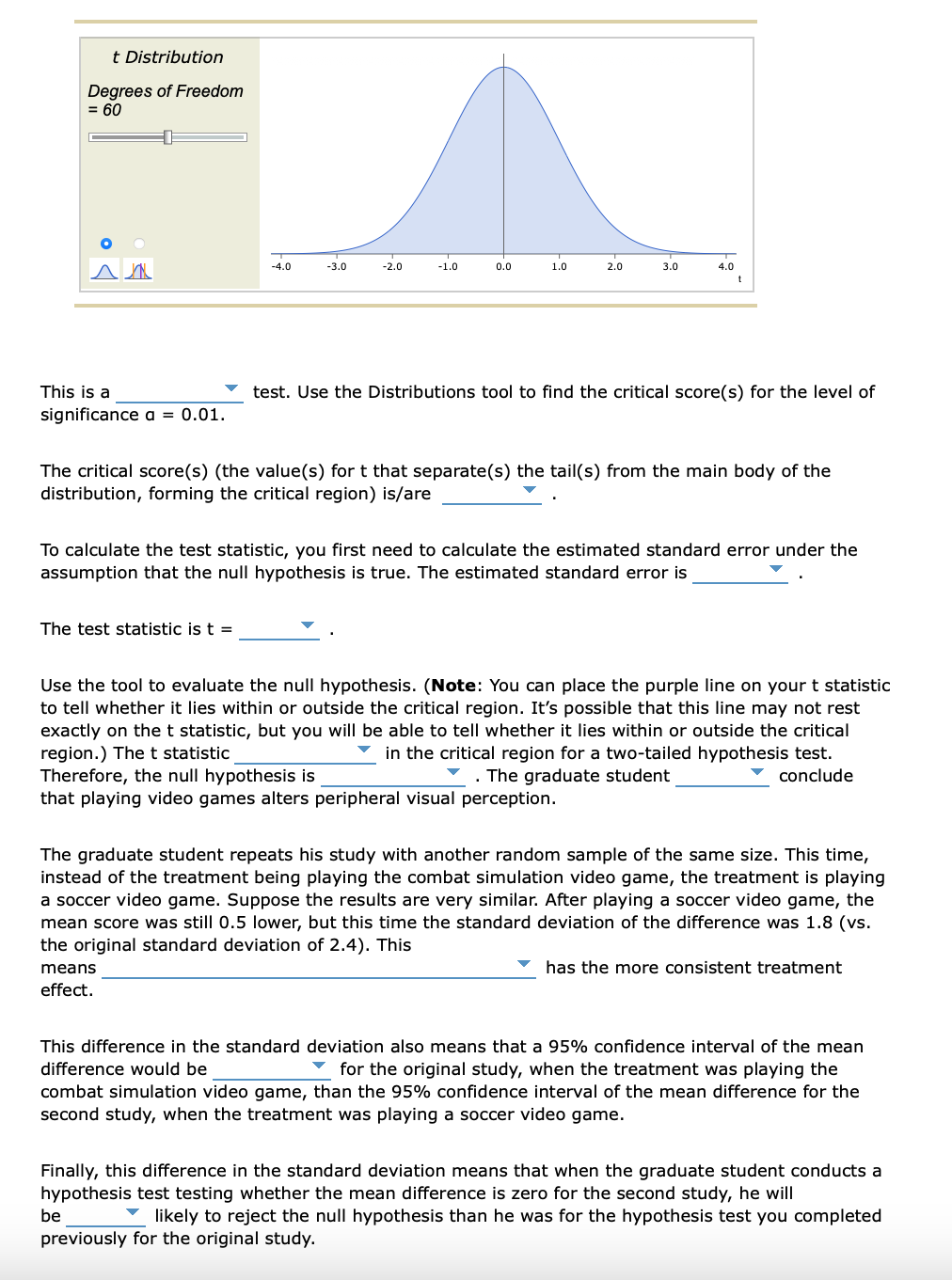(Solved): 8. A two-tailed hypothesis test for a repeated-measures research design Previous studies have shown ...
8. A two-tailed hypothesis test for a repeated-measures research design
Previous studies have shown that playing video games can increase visual perception abilities on tasks presented in the gaming zone of the screen (within 5 degrees of the center). A graduate student is interested in whether playing video games increases peripheral visual perception abilities or decreases attention to peripheral regions because of focus on the gaming zone. For his study, he selects a random sample of 64 adults. The subjects complete a difficult spatial perception task to determine baseline levels of their abilities. After playing an action video game (a first-person combat simulation) for 1 hour a day over 10 days, they complete the difficult perception task for a second time.
Before playing the action video game, the mean score in their accuracy on the spatial task was 0.42. After playing the action video game, the mean score was -0.08. The mean of the differences between each person’s pre- and post- scores was 0.5, with a standard deviation of the differences equal to 2.4.
The graduate student has no presupposed assumptions about whether playing video games increases peripheral visual perception abilities or decreases attention to peripheral regions because of focus on the gaming zone, so he formulates the null and alternative hypotheses as:
| H?: ?DD = 0 | |
| H?: ?DD ? 0 |
He uses a repeated-measures t test. Because the sample size is large, if the null hypothesis is true as an equality, the test statistic follows a t-distribution with n – 1 = 64 – 1 = 63 degrees of freedom.
Expert Answer
The critical score(s) for a two-tailed test with 80 degrees of freedom and a level of significance of ? = 0.05 is ±1.990.The estimated standard error under the assumption that the null hypothesis is true is calculated as:
